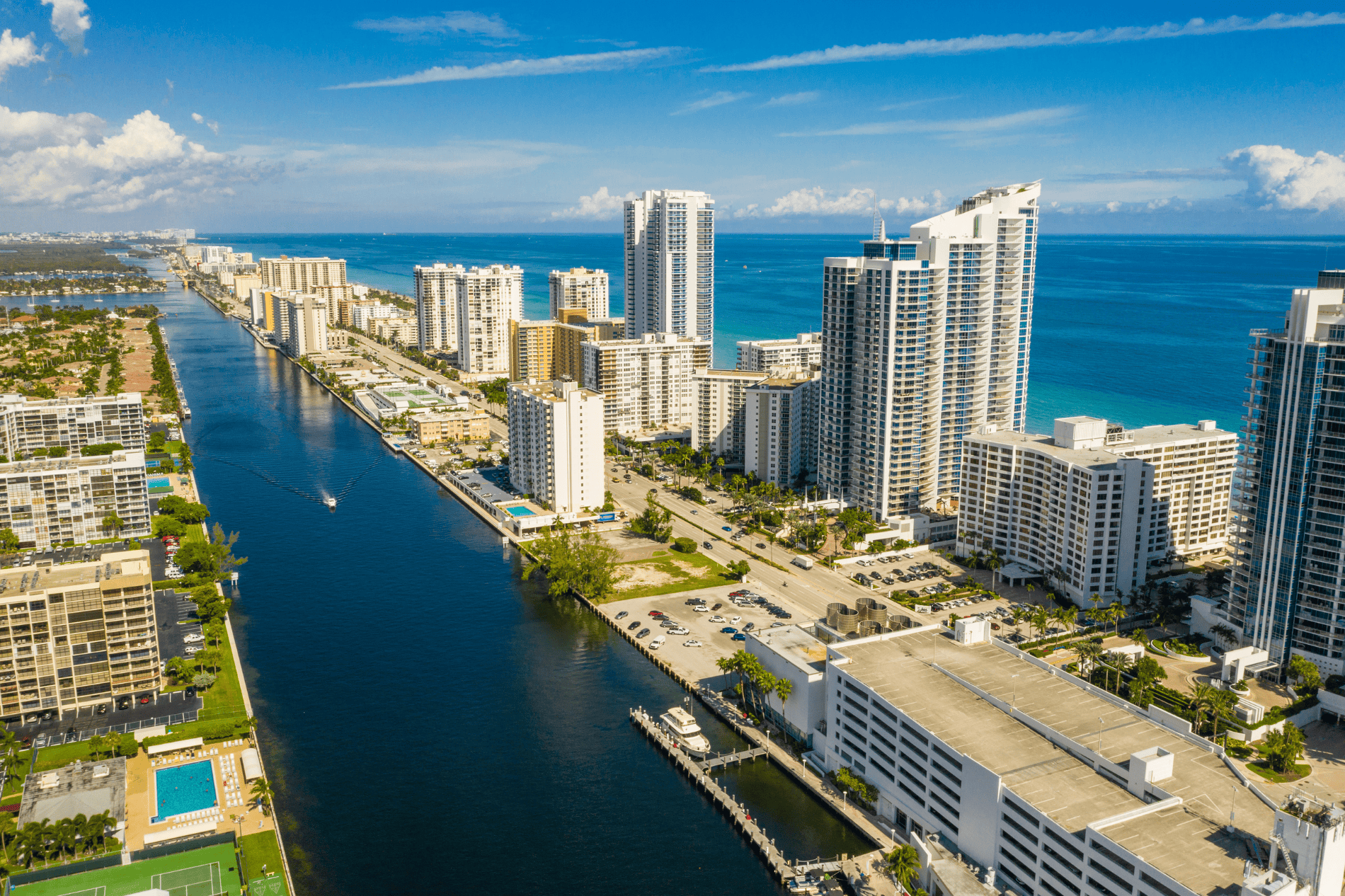Introduction

Nestled along Florida’s southeastern coast, Jupiter, FL, is a town rich in history, natural beauty, and cultural significance. Known for its iconic Jupiter Inlet Lighthouse, which has stood as a maritime beacon since 1860, the town has deep roots in both Native American history and early pioneer settlements. Over the years, Jupiter has evolved into a thriving coastal community while still preserving pieces of its storied past.
One of the most significant ways this history is preserved is through Jupiter’s historic homes. These homes offer a glimpse into the architectural styles, lifestyles, and craftsmanship of past generations. However, as modern development continues, many of these historic properties face challenges such as deterioration, redevelopment pressures, and changing land use policies. Preserving them is essential not only for honoring the past but also for maintaining Jupiter’s unique charm and historical identity.
In this article, we’ll explore some of Jupiter’s most notable historic homes, the stories behind them, and the architectural styles that define the region’s past. We’ll also discuss ongoing preservation efforts and ways residents and visitors can support the protection of these invaluable pieces of history. Whether you're a history enthusiast, a local resident, or someone interested in historic architecture, this guide will provide insight into the timeless beauty and importance of Jupiter’s historic homes.
1. History of Jupiter, FL
Early Settlements and Native American Influences
Long before European settlers arrived, Native American tribes inhabited the Jupiter area for thousands of years. The Jaega people, a Native American tribe indigenous to southeastern Florida, were among the earliest known inhabitants. They lived along the Loxahatchee River, relying on fishing, hunting, and gathering for survival. The area's rich natural resources, including the river and coastal estuaries, made it an ideal settlement location.
In the 18th and early 19th centuries, Seminole Indians migrated to the region, escaping conflicts with American settlers in northern Florida. The Loxahatchee River became the site of the Battle of Loxahatchee in 1838, a significant conflict during the Second Seminole War. Today, remnants of these early settlements can still be seen at sites like Loxahatchee River Battlefield Park and Jonathan Dickinson State Park.
Development of Jupiter in the Late 19th and Early 20th Centuries
Jupiter’s modern development began in the late 1800s, largely influenced by its strategic location along the Loxahatchee River and Jupiter Inlet. One of the most pivotal moments in the town’s history was the construction of the Jupiter Inlet Lighthouse in 1860, which served as a navigational aid for ships traveling along Florida’s east coast. The lighthouse remains one of the area’s most recognized landmarks.
By the late 19th century, Jupiter saw the arrival of early pioneers, who established small farming communities. The expansion of the Henry Flagler’s Florida East Coast Railway in the 1890s further accelerated growth, connecting Jupiter to larger cities like Miami and St. Augustine. The railway allowed for easier transportation of goods, people, and materials, shaping Jupiter into an important hub for trade and development.
Key Industries That Shaped the Town’s Growth
Several industries played a key role in Jupiter’s early economic development:
- Fishing and Maritime Trade: Given its coastal location, Jupiter became a hub for commercial fishing and boatbuilding. The Jupiter Inlet provided easy access to the Atlantic Ocean, supporting a strong maritime economy.
- Agriculture: In the early 20th century, Jupiter’s fertile lands supported pineapple and citrus farming, which became major economic drivers. The area’s warm climate and proximity to transportation routes allowed farmers to export their produce to northern markets.
- Tourism and Real Estate: As transportation improved and Florida gained popularity as a vacation destination, Jupiter’s natural beauty attracted visitors. The growth of the tourism industry in the mid-20th century led to the development of resorts, hotels, and waterfront properties.
Jupiter has transformed over the years, but its rich history remains deeply embedded in its historic homes, landmarks, and natural landscapes. Today, preservation efforts help maintain the town’s historical identity while balancing modern development.
2. Notable Historic Homes in Jupiter

Jupiter, FL, is home to several historic residences that offer a glimpse into the town’s past. These homes, built by early settlers, reflect the architectural styles, craftsmanship, and way of life of the late 19th and early 20th centuries. Below are some of the most notable historic homes in the area.
A. The DuBois Pioneer Home
One of the oldest surviving homes in Palm Beach County, the DuBois Pioneer Home was built in 1898 by Harry DuBois. It is located within DuBois Park, overlooking the picturesque Jupiter Inlet.
The home is often referred to as the "House on the Hill" because it was built atop an ancient shell mound, or Native American midden, created by the Jaega tribe centuries ago. This location not only provided an elevated and scenic view but also gave the DuBois family a natural defense against flooding.
The DuBois family played a significant role in Jupiter’s early development. Harry and his wife, Susan, were pioneers who lived off the land, fishing and farming to sustain their family. Over the years, the home became a gathering place for the local community. Today, it serves as a historic museum, allowing visitors to step back in time and experience what life was like for Florida’s early settlers.
B. The Tindall House
Built in the late 1800s by George Washington Tindall, the Tindall House is another important piece of Jupiter’s history. Originally located on the Loxahatchee River, this home belonged to one of the region’s earliest pioneer families.
George Tindall and his family were among the first permanent settlers in the area, making a living through farming and fishing. The house itself is a classic example of early Florida pioneer architecture, featuring wooden plank construction, a raised foundation, and a wraparound porch designed to provide shade and airflow in the hot Florida climate.
To ensure its preservation, the home was later relocated to the Jupiter Inlet Lighthouse & Museum property, where it remains today. Thanks to ongoing restoration efforts, the Tindall House continues to serve as a historical exhibit, offering visitors a look at early frontier life in Jupiter.
C. Other Noteworthy Historic Residences
In addition to the DuBois Pioneer Home and the Tindall House, Jupiter is home to several other historic residences that highlight the town’s architectural heritage:
- Historic Florida Cracker Homes – These wooden homes, built in the late 19th and early 20th centuries, feature simple designs with large porches, raised floors, and cross-ventilation to combat Florida’s humid climate. Some of these homes remain in private ownership, while others have been preserved as historical landmarks.
- Coastal Vernacular Homes – Some of Jupiter’s early coastal homes, built by fishermen and maritime workers, still stand today, showcasing the region’s unique seaside architectural influence.
- Private Historic Residences – Several homes throughout Jupiter, though not open to the public, remain significant due to their age, architecture, or connection to early settlers. These homes serve as a reminder of Jupiter’s deep-rooted history and the families who helped shape the town.
Preserving these historic homes is crucial to maintaining Jupiter’s cultural heritage. Whether through restoration projects or historical education programs, these residences continue to tell the story of Jupiter’s past while enriching the community’s identity.
3. Architectural Styles of Historic Homes in Jupiter
Jupiter’s historic homes reflect the town’s unique history, climate, and cultural influences. Many of these structures were built with practicality and sustainability in mind, utilizing materials and designs suited for Florida’s hot, humid climate and frequent storms. Below are the most notable architectural styles found in Jupiter’s historic homes.
A. Florida Cracker-Style Homes
One of the most distinctive historic architectural styles in Jupiter is the Florida Cracker-style home, which dates back to the 19th and early 20th centuries. These homes were built by Florida’s early settlers, known as "Crackers," who relied on simple yet functional designs suited to the state’s harsh climate.
Key Features of Florida Cracker Homes:
- Raised Foundations: To protect against flooding and improve air circulation.
- Wooden Construction: Typically made from local cypress or pine, which was readily available and resistant to pests.
- Large Wraparound Porches: Provided shade and ventilation, helping to keep homes cool before air conditioning existed.
- Metal Roofs: Designed to withstand Florida’s frequent rain and storms.
- Open Floor Plans: Allowed for better airflow, keeping interiors cool during hot summers.
Several of Jupiter’s historic homes, such as the Tindall House, showcase Florida Cracker architecture, preserving the style’s historical and functional significance.
B. Coastal and Vernacular Architecture
Jupiter’s proximity to the ocean and its history as a fishing community have influenced the design of many historic homes. Coastal vernacular architecture blends elements of Cracker homes with adaptations suited for life near the water.
Common Features of Coastal Vernacular Homes:
- Stilts or Elevated Foundations: Many homes were built on stilts or raised platforms to protect against storm surges and flooding.
- Shuttered Windows and Wide Overhangs: Helped shield homes from strong winds and heavy rains.
- Lightweight Materials: Wood and tin were commonly used to reduce storm damage.
- Natural Cooling Techniques: Homes were positioned to take advantage of ocean breezes, reducing the need for artificial cooling.
Many of these homes were built along the Loxahatchee River and Jupiter Inlet, where fishing families and maritime workers settled in the late 1800s and early 1900s. The DuBois Pioneer Home is an excellent example of how early settlers adapted their homes to coastal conditions.
C. Preservation Efforts and Renovations
Over time, many of Jupiter’s historic homes have faced threats from weather damage, urban development, and neglect. However, local preservation efforts have helped maintain and restore these valuable structures.
Key Preservation Efforts in Jupiter:
- Relocation and Restoration: Some homes, like the Tindall House, have been moved to protected locations to ensure their survival.
- Historical Societies and Museums: Organizations like the Jupiter Inlet Lighthouse & Museum help educate the public and preserve historic buildings.
- Local and State Grants: Funding from historical preservation programs has supported the restoration of significant homes.
- Community Involvement: Residents and local businesses have contributed to restoration projects, ensuring these historic homes remain part of Jupiter’s landscape.
Preserving Jupiter’s historic architecture is essential for maintaining the town’s unique character and historical legacy. Whether through restoration projects, museum exhibits, or continued advocacy, these efforts ensure that future generations can appreciate Jupiter’s rich architectural heritage.
4. The Role of the Jupiter Inlet Lighthouse & Museum

The Jupiter Inlet Lighthouse & Museum is one of the most significant historical landmarks in Jupiter, FL. Beyond its role as a navigational beacon since 1860, the lighthouse has played a crucial part in the town’s development and the preservation of its history. Many of Jupiter’s historic homes share a connection with the lighthouse, either through their early settlers, architectural influence, or historical significance.
Connection Between Historic Homes and the Lighthouse’s History
The Jupiter Inlet Lighthouse was instrumental in attracting early settlers and shaping the town’s economy. Several of the historic homes in Jupiter were built by pioneers, lighthouse keepers, and fishermen who relied on the lighthouse to navigate the coastal waters.
- The Tindall House, now part of the Jupiter Inlet Lighthouse & Museum property, belonged to one of the area’s first settlers, George Washington Tindall. His family played a key role in Jupiter’s early development, and their home is now preserved as a historical exhibit near the lighthouse.
- The DuBois Pioneer Home, located at DuBois Park near the Jupiter Inlet, was built by one of Jupiter’s earliest families who lived and worked in the shadow of the lighthouse.
- Other historic residences in Jupiter were influenced by the same architectural styles and building techniques used in the lighthouse keeper’s quarters, emphasizing practicality and durability in Florida’s coastal environment.
Efforts to Preserve and Educate the Public About Jupiter’s Past
The Loxahatchee River Historical Society, which operates the Jupiter Inlet Lighthouse & Museum, has been at the forefront of preservation and education efforts in the community. Through exhibits, guided tours, and restoration projects, the museum ensures that Jupiter’s rich history remains alive for future generations.
Key Preservation and Educational Efforts:
- Restoration of Historic Structures: The museum oversees the upkeep of the Tindall House and the lighthouse keeper’s quarters, maintaining their original appearance and historical integrity.
- Public Tours and Exhibits: Visitors can explore the lighthouse, museum exhibits, and preserved homes to learn about Jupiter’s pioneer history, Native American heritage, and maritime influence.
- Historical Programs and Events: The museum hosts lectures, reenactments, and cultural events to engage the community and promote historical awareness.
- Collaboration with Preservation Groups: The lighthouse museum works with local and state historical organizations to secure grants and funding for ongoing restoration projects.
The Jupiter Inlet Lighthouse & Museum serves as a vital link between Jupiter’s past and present, preserving the area’s historical homes, artifacts, and stories. By maintaining these landmarks and educating the public, the museum plays a key role in ensuring that Jupiter’s history remains a cherished part of the community.
5. Preserving Jupiter’s Historic Homes
Preserving Jupiter’s historic homes is essential to maintaining the town’s unique character, architectural heritage, and cultural identity. These homes offer a glimpse into the past, showcasing the craftsmanship and lifestyles of early settlers. However, preservation requires dedicated efforts from organizations, the community, and local authorities to ensure these historical landmarks remain intact for future generations.
A. Organizations Dedicated to Historic Preservation
Several organizations in Jupiter and Palm Beach County are committed to preserving and restoring historic homes and landmarks. These groups work to document, protect, and educate the public about Jupiter’s rich history.
- Loxahatchee River Historical Society (LRHS) – Oversees the Jupiter Inlet Lighthouse & Museum and plays a significant role in preserving historic sites, including the Tindall House.
- Palm Beach County Historic Preservation Program – Works to identify and protect historic properties throughout the county, offering grants and resources for restoration projects.
- Florida Trust for Historic Preservation – A statewide organization that advocates for the protection of Florida’s historic sites, including those in Jupiter.
- Local Historical Societies and Museums – Groups like the Jupiter Historical Society contribute to community awareness and conservation efforts.
B. Challenges in Maintaining and Restoring Historic Properties
Preserving Jupiter’s historic homes comes with several challenges that require ongoing attention and funding. Some of the main obstacles include:
- Weather and Environmental Damage – Florida’s hurricanes, humidity, and salt air can cause structural deterioration, making regular maintenance essential.
- Urban Development and Land Use Changes – As Jupiter continues to grow, historic homes face threats from redevelopment and zoning changes, which can lead to demolition or drastic alterations.
- Cost of Restoration – Restoring historic homes can be expensive, especially when using authentic materials and techniques to maintain historical accuracy.
- Limited Awareness and Funding – Many historic homes rely on grants, donations, and community support, which can be difficult to sustain over time.
C. How Residents and Visitors Can Support Preservation Efforts
Preserving Jupiter’s historic homes is a collective effort that requires support from both locals and visitors. There are several ways to contribute to these efforts:
- Visit Historic Sites and Museums – Supporting places like the Jupiter Inlet Lighthouse & Museum helps fund preservation projects and educational programs.
- Participate in Historical Events – Attending local heritage tours, lectures, and fundraising events promotes community engagement and awareness.
- Advocate for Preservation Policies – Residents can encourage local governments to prioritize historic zoning laws and conservation initiatives.
- Donate or Volunteer – Many historical organizations rely on volunteers and donations to continue their work in maintaining and restoring historic properties.
- Respect and Appreciate Historic Homes – Whether as a homeowner or visitor, recognizing the significance of these homes and treating them with care ensures their longevity.
By actively participating in preservation efforts, the community can help safeguard Jupiter’s historic homes, ensuring that these valuable pieces of history remain standing for generations to come.
Conclusion

Jupiter, FL, is a town rich in history, culture, and architectural heritage. Its historic homes, from the DuBois Pioneer Home to the Tindall House, offer a glimpse into the lives of the early settlers who shaped the community. These homes reflect Florida’s traditional architectural styles, including Cracker-style and coastal vernacular designs, which were built to withstand the region’s climate while maintaining practicality and charm.
Preserving these historic homes is essential to maintaining Jupiter’s unique identity. Through the efforts of local historical organizations, museums, and passionate residents, many of these properties have been protected, restored, and opened to the public. However, ongoing preservation efforts are crucial as modern development and environmental factors continue to pose challenges.
We encourage you to explore and appreciate Jupiter’s historic homes by visiting local landmarks, participating in historical tours, and supporting preservation initiatives. Whether you’re a resident or a visitor, you can make a difference by donating to historical societies, attending community events, or simply spreading awareness about the importance of preserving Jupiter’s past.
Take a step back in time and experience the rich history of Jupiter’s historic homes—each one tells a story of resilience, innovation, and the spirit of the early pioneers. Visit the Jupiter Inlet Lighthouse & Museum, explore historic neighborhoods, and help ensure that these architectural treasures remain a vital part of the community for generations to come.
Posted by Brook Walsh on

Leave A Comment